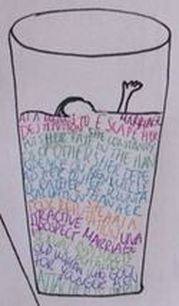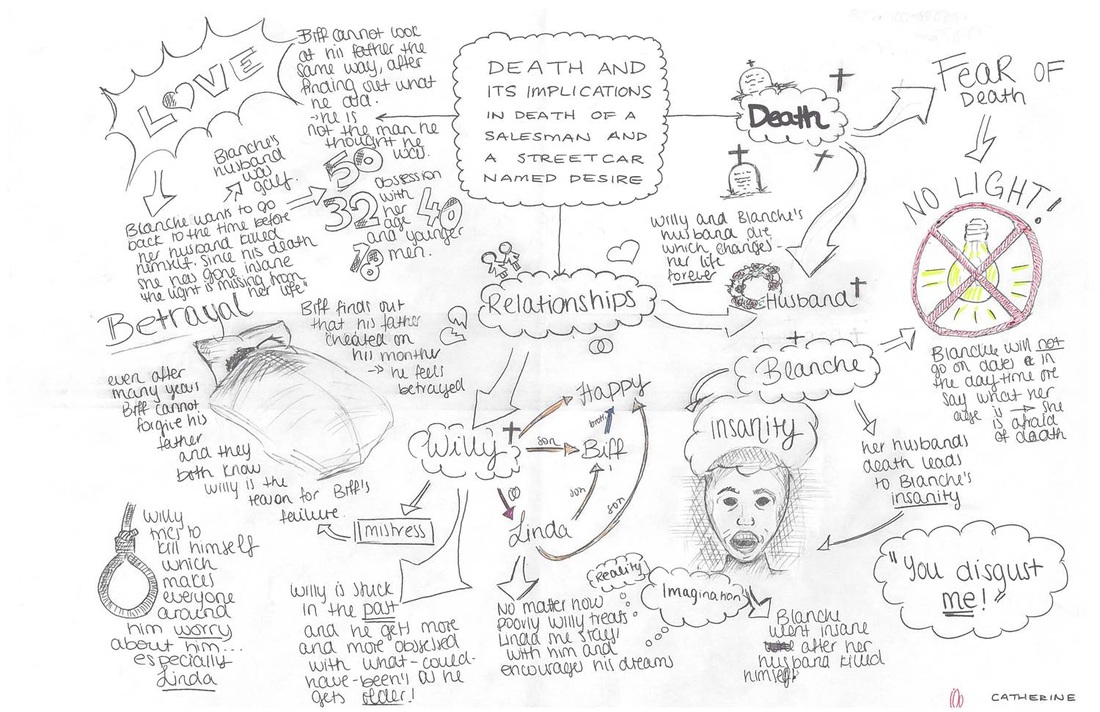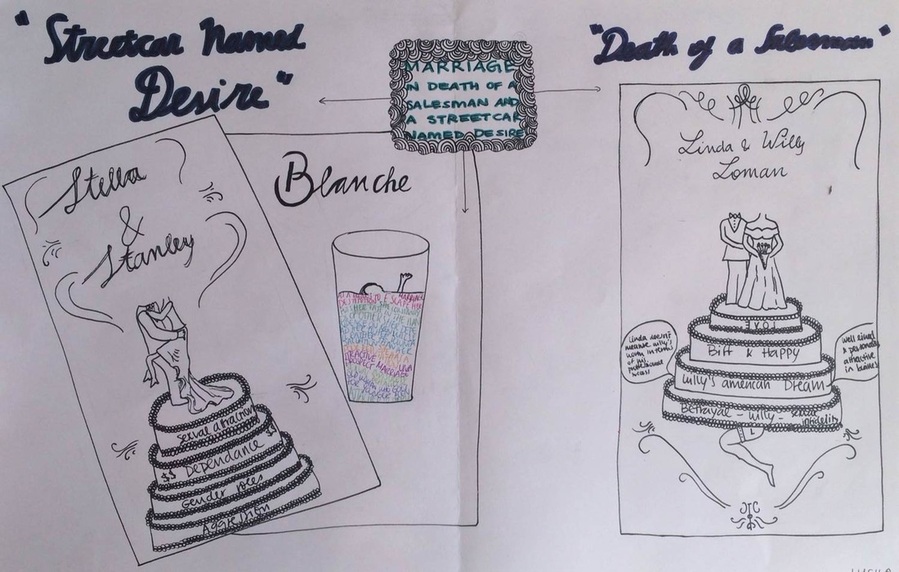EXEMPLARS
It's fine to talk about great activities that we can do with students to foster their appreciation and understanding of the power of visual narrative. However, at some point we need to get them to do these activities, and to assess how well they've understood the fundamental concepts we've been teaching them. This part of the site contains articles whose focus is on exemplars of work that use the visual in order to make meaning.
Visual Narrative Meets Note-Taking
The next time you're having a disagreement with someone about the importance of visual narrative in the classroom, just send them to this post. What you're looking at here is a wonderful example of how visual note-taking--the kind of note-taking inspired by visual narrative--can have a tremendous impact in the classroom. In a recent IB English class at The York School in Toronto, I had my students engage in a visual note-taking exercise. Usually, when we're writing, it makes sense to be fairly linear. Essays tend to be linear, articles tend to be linear, and any kind of formal writing that doesn't involve someone like Borges, Calvino, or Cortazar is going to be pretty linear.
Our minds, however, are not linear.
Visual note-taking allows us to put down on the page our thoughts and ideas in a way that isn't linear. It therefore serves as a bridge between how we think and what we want to say. Those of you out there who burn the midnight oil making comics probably already know this. When you were in school, your teachers probably asked you to stop doodling on more than one occasion.
But doodling is crucial.
In the above piece, my student, Catherine, is using visual note-taking in order to draw connections between Arthur Miller's Death of a Salesman and Tennessee Williams' A Streetcar Named Desire.Some students went with flowchart structures, others chose mind maps, but most of the students, regardless of artistic skill, opted for the visual and the symbolic. Catherine's artistic skills are exceptional, but more importantly, they allowed her to express her exceptional thinking skills.
And that just totally rocks.
Our minds, however, are not linear.
Visual note-taking allows us to put down on the page our thoughts and ideas in a way that isn't linear. It therefore serves as a bridge between how we think and what we want to say. Those of you out there who burn the midnight oil making comics probably already know this. When you were in school, your teachers probably asked you to stop doodling on more than one occasion.
But doodling is crucial.
In the above piece, my student, Catherine, is using visual note-taking in order to draw connections between Arthur Miller's Death of a Salesman and Tennessee Williams' A Streetcar Named Desire.Some students went with flowchart structures, others chose mind maps, but most of the students, regardless of artistic skill, opted for the visual and the symbolic. Catherine's artistic skills are exceptional, but more importantly, they allowed her to express her exceptional thinking skills.
And that just totally rocks.
Visual Narrative Meets Note-Taking, Again!
Here is another example of the same activity as described above--a Sir Ken Robinson / RSAnimate-inspired visual note-taking exercise. This time the student is not comparing the spectre of death in A Streetcar Named Desire and Death of a Salesman, but rather the theme of marriage in both works. The result is amazing...
The minimalist nature of the notes themselves are part of the beauty and importance of this example. Note for instance how cleverly Lucila has shown Blanche literally drowning in a glass of whiskey, and then look more closely to see what the whiskey is composed of.

The text looks at Blanche's desire to escape the past, but it's run together and becomes very difficult to interpret--as though it is visually expressing slurred speech, a hazy memory, and a desire to forget. Blanche is colourful and so are the letters. Blanche tries to make sense of the past and fails just as the letters do.
No doubt the student could have managed to articulate these things if asked to engage in a more traditional brainstorming exercise, but I doubt that it could have captured so forcefully, so expertly, so profoundly something that is at the heart of Williams' play.
We could look at the visual note-taking that the student has done and at first glance we might think she has expressed very little.
But how very wrong we would be!
No doubt the student could have managed to articulate these things if asked to engage in a more traditional brainstorming exercise, but I doubt that it could have captured so forcefully, so expertly, so profoundly something that is at the heart of Williams' play.
We could look at the visual note-taking that the student has done and at first glance we might think she has expressed very little.
But how very wrong we would be!


